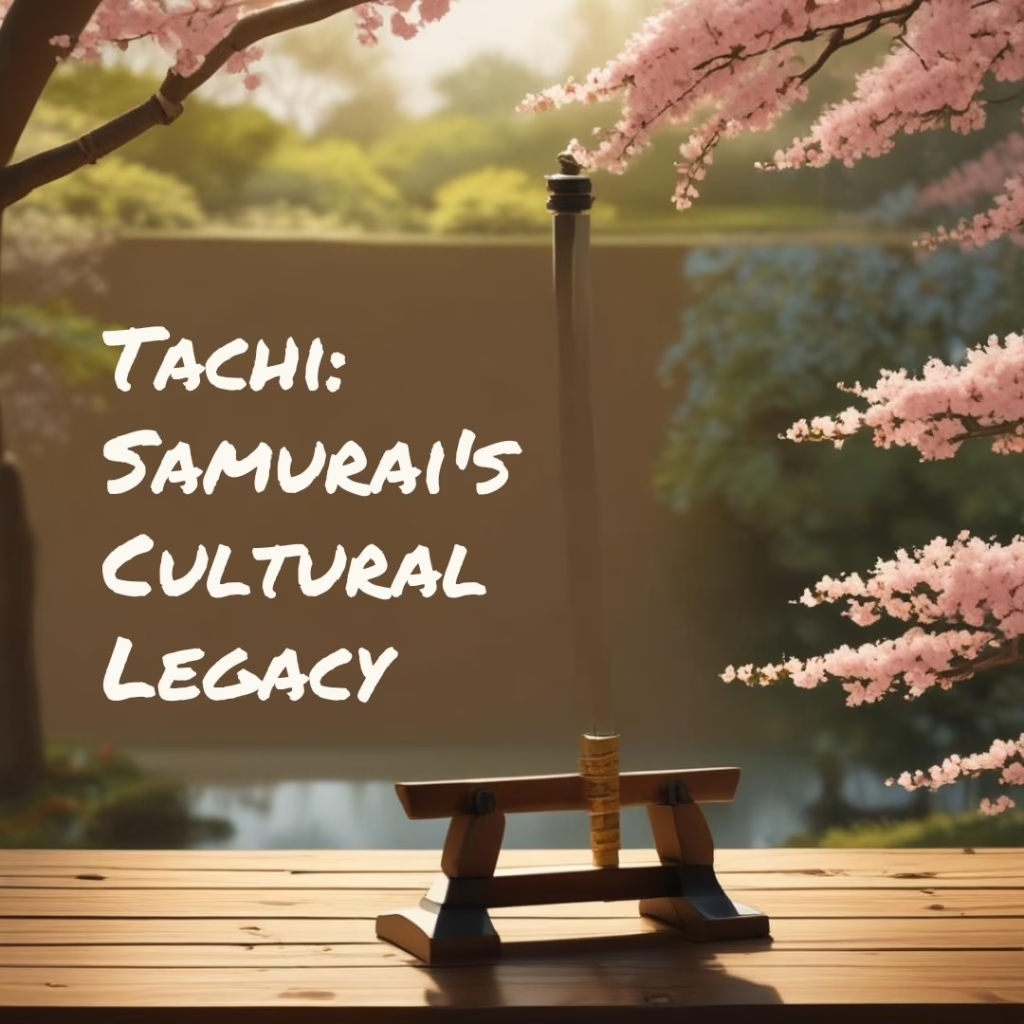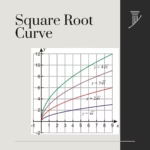The Tachi is an exceptional Japanese sword that holds significant historical and cultural importance. Renowned for its exquisite craftsmanship and graceful design, the sword was pivotal in samurai warfare, serving as a trusted weapon on the battlefield. Beyond its practical use, it embodies the artistry and traditions of Japanese sword-making, reflecting the skill and dedication of the artisans who crafted it. Exploring the Tachi offers valuable insights into Japan’s rich history, including its martial practices, artistic expressions, and the evolution of swordsmanship. This remarkable blade not only represents the spirit of the samurai but also continues to be a powerful symbol of Japan’s cultural heritage. Understanding the tachi enhances our appreciation for the intricate relationship between craftsmanship, history, and identity in Japanese culture.
Definition of Tachi
The term “tachi” encompasses various meanings, but it is most commonly recognized as a traditional Japanese sword with deep historical significance.
As a Sword

The blade is characterized by its distinctive curved, single-edged blade, typically measuring between 70 to 80 centimeters in length. This elegant design was favored by samurai warriors before the emergence of the katana, which eventually became the more prominent symbol of the samurai class. The blade’s curvature not only enhances its aesthetic appeal but also optimizes its effectiveness in combat, allowing for powerful slashing motions. The construction of the sword involves meticulous craftsmanship, often showcasing intricate details in both the blade and the hilt, reflecting the artistry of the period.
Cultural Significance
In feudal Japan, the blade was more than just a weapon; it held considerable cultural and ceremonial importance. Traditionally, tachi were worn with the blade facing down, a practice that symbolized both respect and readiness. This edge-down position was practical for drawing the sword quickly in battle, yet it also emphasized the sword’s role in various rituals and ceremonies. The tachi was often associated with samurai status and identity, serving as a representation of honor, loyalty, and martial skill.
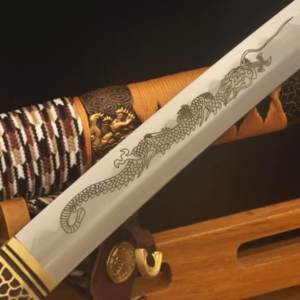
Additionally, the blade is often adorned with elaborate fittings and engravings that reflect the owner’s lineage and achievements, further enhancing its cultural significance. Understanding the tachi provides valuable insight into the values, traditions, and social hierarchies of feudal Japan, underscoring its enduring legacy in Japanese history and culture.
Historical Background
Origin and Evolution of the Tachi
The blade traces its origins back to Japan’s Heian period (794–1185) and experienced significant evolution through the subsequent Kamakura period (1185–1333). Initially, the tachi was designed primarily for mounted combat, featuring a curved blade that allowed for effective slashing attacks while riding on horseback. This design made it an ideal weapon for the samurai, who often engaged in battles from their steeds. The curvature of the blade not only enhanced its combat effectiveness but also contributed to its aesthetic appeal, showcasing the artistry of Japanese sword-making.
As the centuries progressed, the tachi transformed into a status symbol among the samurai class. Its intricate decorations, which included elaborate fittings and engravings, reflected the social status and wealth of its owner. Families often passed down these beautifully crafted swords through generations, imbuing them with historical significance and familial pride.
Key Periods Associated with the Tachi
Heian Period (794–1185)
During this era, the blade saw its early development and widespread use, particularly among the aristocracy. The sword became a vital part of the samurai’s identity, embodying their values of honor and loyalty. The designs of the Tachi began to incorporate intricate ornamentation, reflecting the cultural emphasis on beauty and craftsmanship.
Kamakura Period (1185–1333)
This period marked significant refinement in the tachi’s design, as the demands of warfare evolved. The tachi was adapted for more effective use in battle, with enhancements made to its blade and hilt to improve functionality. The rise of the samurai class during this time further solidified the tachi’s status as a prestigious weapon, often associated with the warriors’ martial prowess and noble lineage.
Muromachi Period (1336–1573)
The transition to the katana began during the Muromachi period, as this new sword design gained prominence due to its effectiveness in close combat. While the tachi remained respected, the katana’s single-edge design and shorter length made it more suitable for the changing dynamics of warfare. This shift reflected broader changes in combat strategies and the social structure of Japan.
Characteristics of Tachi Swords
The blade is unique among Japanese swords, setting itself apart through several key characteristics that reflect its historical significance and design purpose.
Blade Shape
The sword features a longer and more pronounced curvature compared to other Japanese swords, typically measuring between 70 to 80 centimeters in length. This elongated blade not only enhances its aesthetic appeal but also serves a functional purpose, allowing for more effective slashing motions during combat. The length of the blade makes it particularly suited for use by mounted warriors, facilitating powerful strikes while on horseback.
Curvature
The curvature of the blade is specifically designed to optimize cutting efficiency, particularly in mounted combat scenarios. This design allows the wielder to execute swift, sweeping cuts that can effectively engage opponents from a distance. The pronounced curve assists in drawing the sword quickly, enabling the samurai to react promptly in battle—a crucial advantage during skirmishes.
Materials
Traditionally, the tachi was crafted from high-carbon steel, a material known for its durability and ability to hold a sharp edge. The blades were often enhanced with intricate fittings and decorations, showcasing the skill of the artisans who crafted them. These embellishments not only added aesthetic value but also reflected the status and lineage of the sword’s owner, making each tachi a unique piece of art.
Comparison with Other Japanese Swords
Katana vs. Tachi
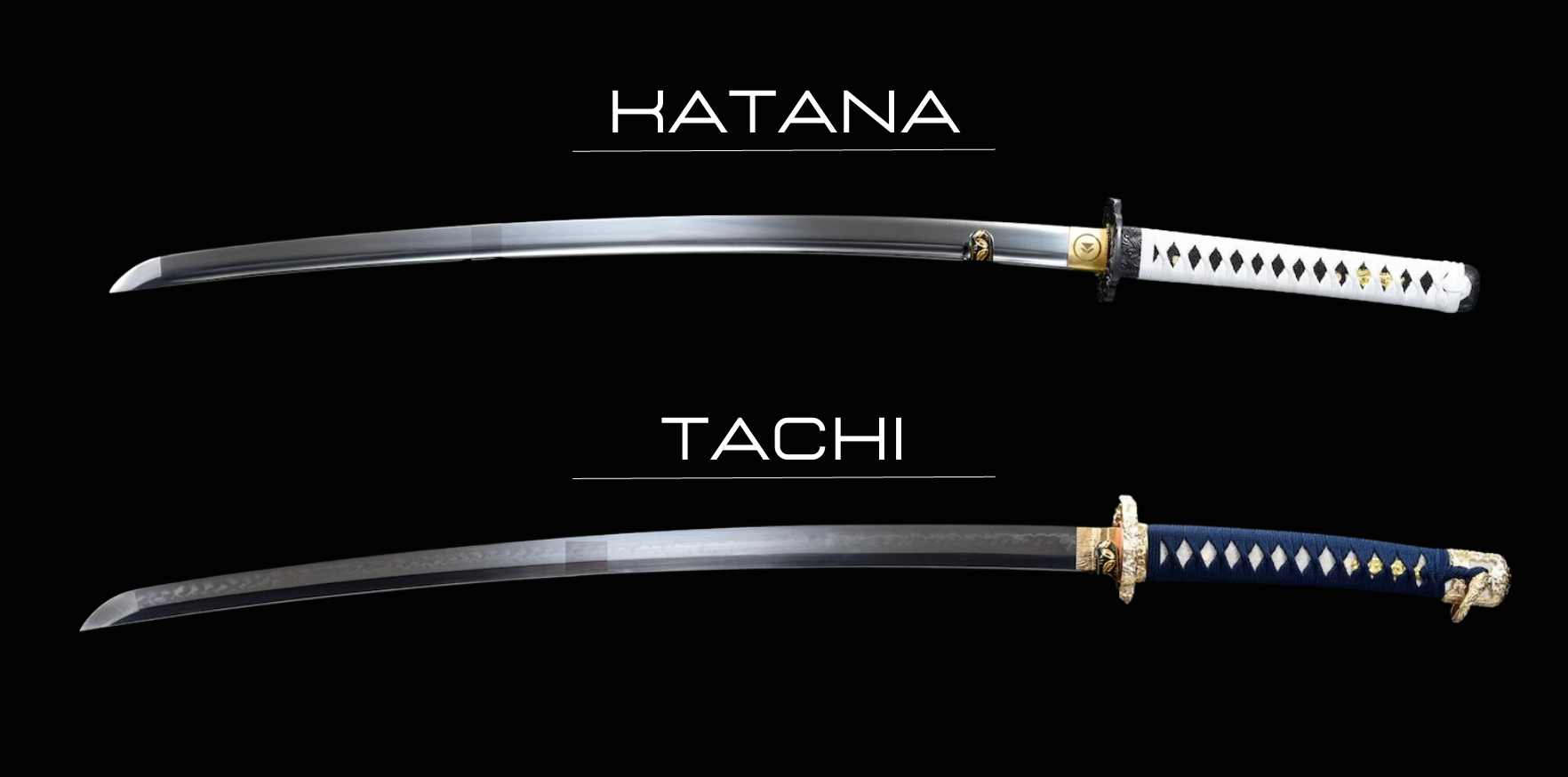
The katana is often regarded as the more iconic Japanese sword, characterized by its shorter length and less pronounced curvature. Typically worn with the blade facing upwards (edge-up), the katana allows for quick and fluid draws, making it ideal for close combat situations. While both the katana and tachi share a common heritage, the katana emerged as the preferred weapon during the later periods of samurai history due to its versatility and ease of use in the changing dynamics of warfare.
Wakizashi vs. Tachi
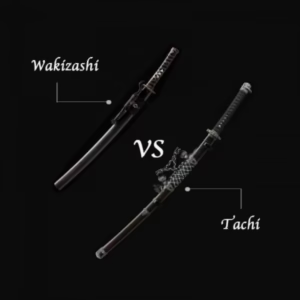
The wakizashi is a smaller companion sword that is often paired with the katana in the traditional daishō set, which symbolizes the status of a samurai. Measuring 30 to 60 centimeters, the wakizashi is ideal for close combat when a longer sword is impractical. Together, the katana and wakizashi provide a well-rounded arsenal for a samurai, allowing for both versatility and adaptability on the battlefield.
Tachi in Japanese Culture
The tachi transcended its role as a mere weapon; it emerged as a profound cultural symbol deeply embedded in the identity and values of the samurai class.
Samurai Warfare
The tachi was extensively utilized in battles, serving as a testament to the skill and status of the samurai. Its design, optimized for mounted combat, allowed warriors to execute powerful slashes while riding, making it an effective tool in the tumultuous warfare of feudal Japan. The presence of a tachi on the battlefield signified not only the martial prowess of its wielder but also their noble heritage and commitment to the samurai code of honor, known as bushido.
Art and Literature
Beyond its practical applications, the tachi found a prominent place in traditional Japanese art and literature. It was often depicted in paintings, where its elegant form showcased the craftsmanship of artisans. Poets and storytellers incorporated the tachi into their works, weaving tales of heroism and valor that celebrated the samurai spirit. These representations helped solidify the tachi’s status as an enduring symbol of Japanese culture and identity.
Symbolism
The tachi came to embody key values such as honor, loyalty, and the indomitable warrior spirit. It represented the samurai’s commitment to their lord and their duty to protect their land and people. The sword was more than just a weapon; it was a reflection of the samurai’s moral code and their place within the social hierarchy of feudal Japan.
Historical Significance
Famous historical battles, such as the Genpei War (1180–1185), prominently featured samurai wielding tachi. This conflict between the Taira and Minamoto clans highlighted the tachi’s importance in Japan’s military history. The battles highlighted the tactical advantages provided by the tachi, as well as the fierce loyalty and honor exhibited by the samurai.
Tachi Craftsmanship
Creating a tachi demanded extraordinary skill and meticulous attention to detail, transforming the process into a revered art form within Japanese culture.
Techniques
The traditional techniques used in forging a tachi involved the intricate process of folding high-carbon steel. This method improved the blade’s sharpness and resilience, enabling it to endure the rigors of battle. By repeatedly folding and hammering the steel, artisans could eliminate impurities and create a blade with a unique pattern, known as “Hamon,” which reflects the cooling process during forging. This technique not only ensured durability but also imbued each tachi with its distinct character and beauty.
Master Smiths
The craftsmanship of the tachi was taken to new heights by renowned swordsmiths, particularly those from esteemed schools such as the Bizen and Yamashiro. Celebrated for their exceptional skills and innovative techniques, master smiths elevated tachi-making into a highly respected profession. Their dedication to the craft involved years of rigorous training and a deep understanding of metallurgy, culminating in swords that were not only functional weapons but also exquisite works of art. The legacy of these smiths continues to influence sword-making practices and is a source of pride in Japanese culture.
Cultural Significance
The craftsmanship exhibited in a tachi was a direct reflection of its owner’s social status and the legacy of the smith who created it. A finely crafted Tachi symbolized a samurai’s wealth and rank, serving as a cherished heirloom passed down. The connection between the sword and its owner reinforced the importance of honor and lineage within samurai culture.
Modern Relevance of Tachi
In contemporary society, the tachi remains a source of inspiration and admiration across various fields, reflecting its enduring legacy.
Collectors
Collectors highly seek the Tachi, cherishing it for its historical significance and exquisite craftsmanship. Enthusiasts and historians alike appreciate these swords not only for their aesthetic beauty but also for their cultural importance. Many collectors seek authentic pieces, often investing time and resources into acquiring Tachi that exemplify the artistry of renowned swordsmiths. The Tachi’s rich history makes it a fascinating subject of study, prompting collectors to delve into the stories behind each blade and its maker.
Martial Artists
In the realm of martial arts, the tachi has found a place among practitioners of traditional swordsmanship. Some martial artists train with replicas of the Tachi, incorporating its techniques and movements into their practice. This connection to the past allows martial artists to honor the traditions of the samurai while developing their skills. Training with a tachi replica deepens understanding of combat techniques and reinforces samurai philosophy.
Pop Culture
The influence of the tachi extends into popular culture, where it makes appearances in movies, anime, and video games. These representations keep the legacy of the Tachi alive and introduce it to new audiences. Characters wielding tachi often embody the ideals of honor, bravery, and skill, resonating with fans and reinforcing the sword’s symbolic significance. Through modern media, the Tachi captivates audiences, keeping its history and cultural relevance alive.
Conclusion
The tachi is not merely a Japanese sword; it is a profound representation of the cultural and historical legacy of the samurai. Renowned for its craftsmanship and design, the sword was vital in samurai warfare, symbolizing skill and nobility. Its unique features, such as the curved blade and elaborate decorations, reflect the artistry of skilled swordsmiths, making each piece a work of art. Beyond its practical uses, the sword embodies values like honor and loyalty, deeply rooted in the samurai code of bushido. Today, the sword continues to inspire collectors, martial artists, and enthusiasts, bridging the past with the present. Its presence in popular culture, from films to video games, ensures that its legacy endures, captivating new generations. Understanding the tachi enriches our appreciation of Japan’s rich heritage, highlighting the intricate relationship between craftsmanship, history, and identity in Japanese culture.
FAQs
- What is a Tachi?
The tachi is a traditional Japanese sword that samurai use, recognized for its curved blade and ceremonial significance. - How is a Tachi different from a katana?
It is longer, more curved, and worn edge-down, unlike the katana, which is shorter and worn edge-up. - When was the Tachi invented?
The sword originated during Japan’s Heian period (794–1185). - What was the Tachi used for?
Samurai primarily used the tachi for mounted combat and as a symbol of their status. - What materials were used to make a Tachi?
Craftsmen made this sword from high-carbon steel, often featuring intricate fittings and decorations. - Who made the Tachi?
Skilled swordsmiths, such as those from the Bizen and Yamashiro schools, crafted this sword. - Is the Tachi still used today?
Collectors, martial artists, and historians appreciate the sword, even though they don’t use it in combat. - Why is the Tachi important in Japanese culture?
It represents the samurai’s honor and the craftsmanship of traditional Japanese sword-making. - What is the significance of the Tachi in modern pop culture?
It appears in anime, movies, and video games, celebrating their historical and cultural value. - How is the art of Tachi-making preserved?
Master swordsmiths and cultural organizations work to ensure that the craft is passed on to future generations.
If you like reading this, you may also like
Thanks for reading, for more interesting articles, visit our homepage.

